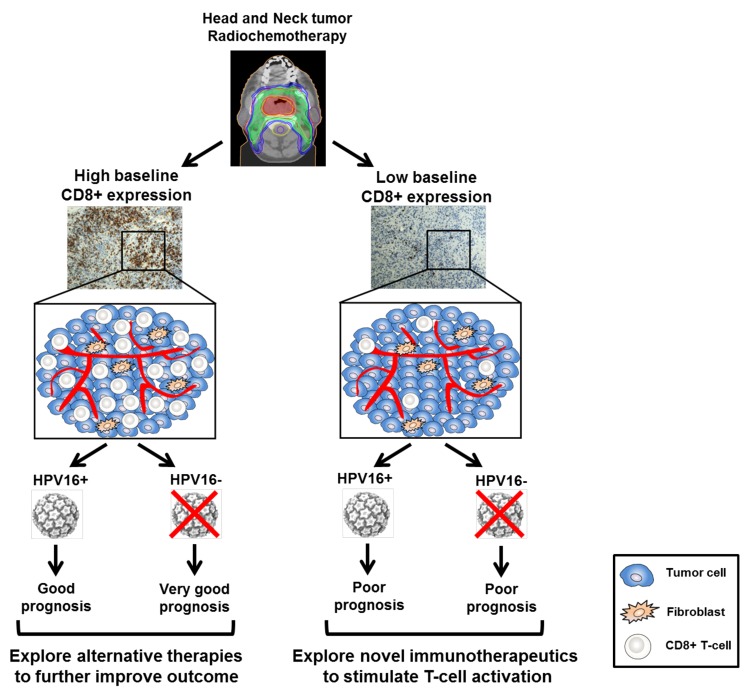Figure 1. Tumor-infiltrating lymphocytes favor the response to chemoradiotherapy of head and neck cancer. Patients with head and neck squamous cell carcinoma (HNSCC) manifesting a robust tumor infiltration by CD8+ T cells before therapy (baseline) had a favorable clinical outcome, whereas patients with reduced amount of CD8+ (and CD3+) tumor-infiltrating lymphocytes presented worse prognosis upon chemoradiotherapy (CRT). Interestingly, high levels of CD8+ TILs were associated with excellent clinical outcome in human papillomavirus (HPV)− patients, whereas a only moderate benefit was observed in HPV16+ individuals. In contrast, patients with limited CD8+ T-cell infiltration had an unfavorable prognosis, irrespective of their HPV status. Of note, our cohort included patients with HNSCC from various anatomical locations and not only the oropharynx, which is the common site of HPV-associated HNSCCs. Based on the levels of CD8+ T-cell infiltration at baseline, novel immunotherapeutic strategies could be explored in combination with CRT to improve disease outcome in HNSCC patients.

An official website of the United States government
Here's how you know
Official websites use .gov
A
.gov website belongs to an official
government organization in the United States.
Secure .gov websites use HTTPS
A lock (
) or https:// means you've safely
connected to the .gov website. Share sensitive
information only on official, secure websites.
